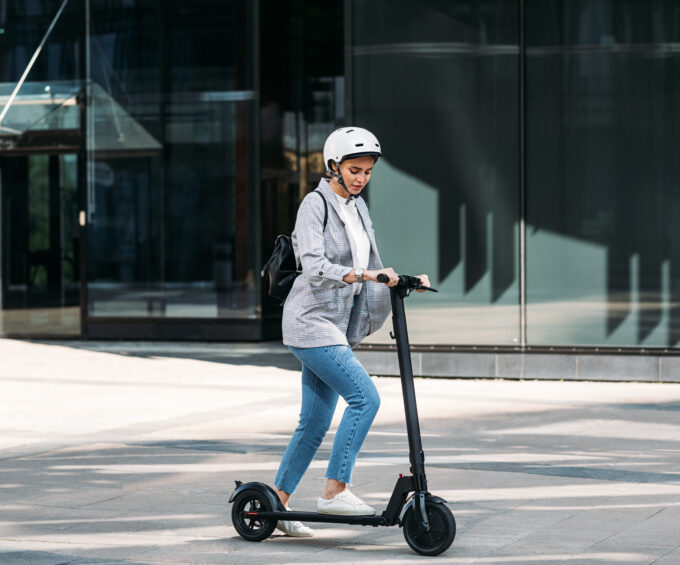Can Smart Mobility help protect the environment and, in the process, make transport more efficient? This ambition is at the heart of every major city planning initiative because mobility is the lifeline of every city, facilitating the influx of millions of people every day. It is also the key enabler of the economy, lifestyle, and yes, environmental impact as well.
Overall, transportation is the 3rd biggest contributor to GHG (Greenhouse Gas) emissions according to various studies, and perhaps even higher in a densely populated metropolis or megapolis.
It is clear that mobility must simultaneously be highly sustainable, smart and efficient within the modern city, but there are some unique challenges and characteristics to consider when innovating. Demand management, flexible capacity, multi-modal transport, and effective monitoring are some of the essential considerations, not to mention operational control and policy requirements.
Recognizing the vital role of smart mobility in powering the sustainable cities of tomorrow, 2023’s BCG Hackathon was dedicated to the Future of Mobility.
From helping a major Italian highway operator to significantly enhance sustainability, to helping the local government in Baku to make informed transport related policy decisions, smart and sustainable mobility solutions are BCG’s specialities.
As we look back on the Hackathon, this article intends to illustrate the importance of digitalization and connected smart ecosystems in successfully tackling mobility challenges. Above all, we will highlight the reasons that an ecosystem approach and holistic solutions are crucial.
A Step Change in Mobility Value Creation
A few years ago, Singapore implemented an API based architecture that enabled private parties to offer solutions based on the consumer usage data of its transport systems. Subsequently, we have seen other cities like London pioneering data acquisition and accessibility in a public-private partnership to support innovation in mobility. To impact a multilateral ecosystem, mobility requires the right technological foundations to be in place to enable seamless collaboration, customer centricity and effective partnerships. Data is at the heart of this mix, and a flexible, modular, secure data architecture can help it become a key lever.
But to distil this concept even further, the key areas where technological innovation can play a part can be summarized in three key areas. The first is enablement and digitalization, including hardware, sensors and edge computing. Next, we have offerings based on consumer usage data, such as Digital Twin technology for transport, and finally, micro mobility and connecting the smart vehicle ecosystem through a modular IT architecture and flexible technology stack to support long-term.
Huge parallels can be drawn from the Open Banking ecosystem created in the UK which is first and foremost customer centric. It enables the key service providers i.e., the banks interfaces via APIs to exchange data, authenticate users and provide a huge range of services leveraging the Open Banking Platform.

Future of Mobility is Smart
Some city planners have recently seen unprecedented reactions to the broadening of high emission vehicle restriction zones. In several cases, implementations of cycle lanes have potentially had an impact on traffic profiles, but it is still unclear if those are positive or negative. In the absence of clear measuring criteria from data-fed modelling, like the kind offered by Digital Twins, measurements of CO2 and NOx (Nitrogen Oxides levels) levels are the only way to determine how successful implementations like the ones referenced above have been.

We see the same situation in suburbs that are marked as low traffic neighborhoods, as arguably these initiatives are seen as limiting factors and have no clear success criteria to measure. It is evident that technology-based modelling that integrates and analyses usage data, traffic profile mapping, and time of day usage patterns can help make transport policy decisions more holistic. This approach is also more likely to be in the wider public and climate interest and does not pose the dilemma of one or the other.
Autonomous airborne delivery robots, flying taxis, and driverless vehicles are concepts that are quickly shifting from fantasy to reality, and are set to characterize the smart future. With this in mind, traditional road users must be able to co-exist with these more cutting-edge forms of traffic, as must pedestrians. Because of this, a truly smart future will have to operate as an ecosystem, one that considers the increasing density of city spaces and their various users.
Embracing Smart Ecosystems

Creativity and dynamism will be required for the challenge that faces us. We must devise solutions that radically transform the way we experience mobility, while always keeping climate impact and the consumer at the heart of our progress.Not only will embracing an ecosystem approach enhance creativity and innovation, but it will also allow for alignment on regulatory and compliance factors, which are becoming increasingly complex.
BCG is working with several leading organizations across a variety of sectors that are witnessing crossovers between their core business and smart city agendas. The connection between Energy and Mobility is frequently at the heart of these convergences, and trends like this are creating new value chains and opportunities.
For example, traditional infrastructure players are now progressively looking to diversify and adopt electric vehicle (EV) charging solutions, and battery storage operators are tapping into electric fleet management and joining the national grid flex supply.
Conclusion
With both complex challenges and major opportunities ahead in the smart mobility space, digitalization must be harnessed, and innovation will be critical. Game-changing results will be unlocked when the most dynamic players operate as part of a multilateral ecosystem, one that is connected through an API based modular architecture, supports security standards, and leverages data through open data-based standards and commitments.
We enjoyed seeing how participants of our BCG Hackathon got on this year. Find out more about how BCG expertise was on hand to guide and enthuse those designing the future of mobility.


